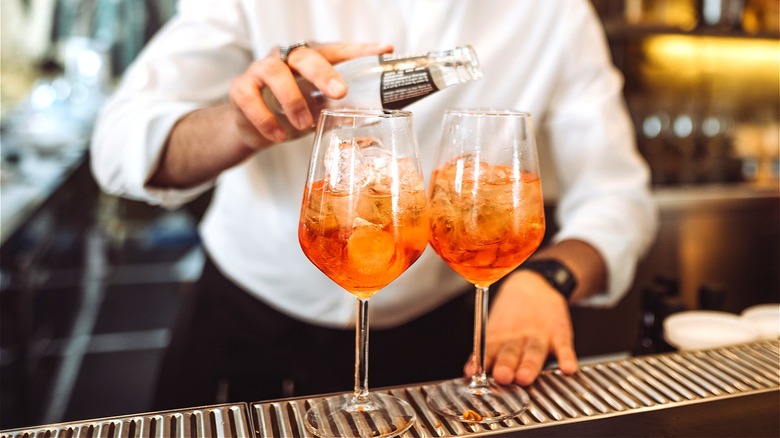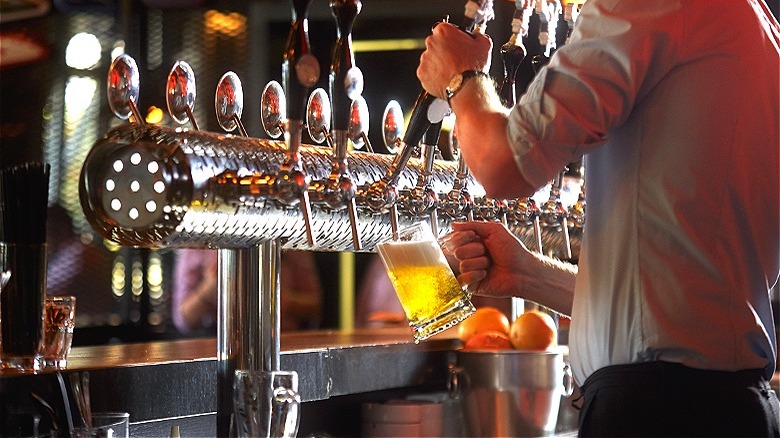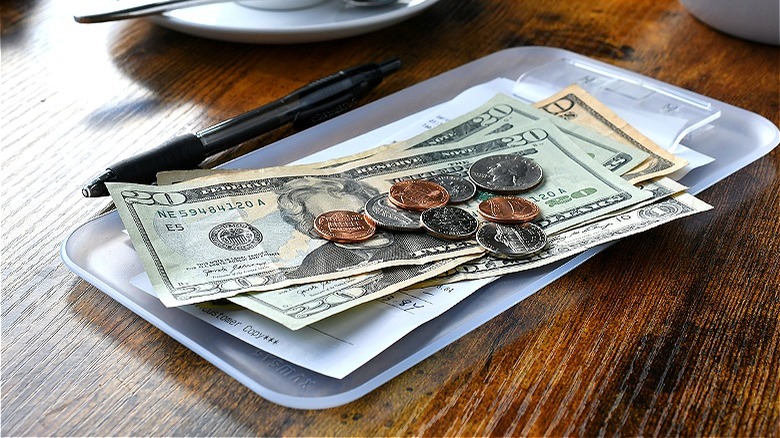How Much Money Should You Tip Your Bartender?
In the post-pandemic economy, tipping culture can feel more confusing than ever. From ubiquitous tip screens to take-out tip expectations to tip options above 35%, most Americans are burned out. A 2023 Bankrate survey found that 66% of Americans now harbor a negative opinion when it comes to tipping, and this tip fatigue is having an impact on long-standing tipping "rules" across the country. While certain services have traditionally commanded set tipping amounts (e.g., tipping 15% to 20% when eating out at a restaurant), other service areas like haircuts, ride-shares, and housekeeping can be less clear. This, combined with a general confusion surrounding post-pandemic tipping, has left many service workers struggling to maintain tip levels.
Bartenders, in particular, can be a confusing tipping group since you might find yourself paying per round as opposed to having a running tab or a total bill. Plus, unlike at a restaurant where you might tip a percentage on a total, it's more typical to leave a flat tip amount per drink or per round. Yet this can lead to its own problems for bartenders, especially if a person chooses to tip only on one round, even if they order multiple. Plus, did you know that your tip amount should actually be determined based on the kind of drink you ordered? Complexity and the time required to make the drink should absolutely be a factor in your tipping habits. According to Food & Wine Magazine, the general rule of thumb is that a bar tip should be $1 for a beer and $2 for a cocktail.
Tipping rules for bartenders
According to Food and Wine Magazine, the rule of thumb for tipping amounts should apply to each cocktail, not the total. Meaning a round of four cocktails should get an $8 tip, not a $2 one. However, the price of your cocktail can have a huge impact on just how generous this bartender tipping rule is. For instance, per FinanceBuzz's survey of margarita prices across the country, the average price of a margarita was $9.16 in 2023 (up 8% since 2022), meaning $2 would be about a 22% tip. However, in New Jersey, where the average margarita is $12.20 (the highest in the country), your $2 tip is roughly 16%. Similarly, the rule that beers should get a $1 tip can be equally difficult to calculate depending on not only the beer prices but also whether it's a canned or draught beer.
While consumers might push back against tipping bartenders out of a notion that the work they do isn't difficult or complicated, many bartenders have extensive knowledge of not just spirits, beer, and wine but also the process of making these drinks as well as flavor profiles and tasting notes. As Julia Huang, a bartender working in New York, explained to Thrillist, "When it comes to cocktails, most bad tippers are unaware or just don't consider the amount of creativity, work, and time that goes into creating that perfect drink." From mixology to ingredient prep, bartenders (particularly at high-end establishments) are crafting more than a simple well-drink.
What tips mean for most bartenders' wages
Tipped workers like bartenders are often paid sub-minimum wages that require tips to make up the difference. In fact, sixteen states still use the 1991 federal sub-minimum rate of $2.13 per hour for tipped workers, while another 26 states (plus the District of Columbia) have a tipped minimum wage that's higher than $2.13 but still below the federal minimum wage of $7.25. This means that, in the majority of U.S. states, the bartenders and service staff working at restaurants and bars are relying almost entirely on tips to pay their bills. Despite this, people today are still less willing to tip than in previous years. In 2019, for example, 77% of people reported always tipping when dining at a sit-down restaurant compared to only 65% in 2023 (via Bankrate).
Interestingly, the current lack of livable wages for U.S. service workers is increasingly a factor in America's tipping habits but not necessarily in the way you might think. According to Bankrate, 41% of surveyed adults said they felt that businesses should be paying their employees more rather than relying on customer tips to offset poor wages. While this is absolutely a noble thought, without more meaningful policy changes surrounding wage increases across the country, this opinion on tipping is more likely to hurt tipped workers than help. As consumers increasingly feel frustrated and strained by price increases, they're less likely to tip (or tip less) despite the incredibly low sub-minimum or minimum wage rates affecting service workers in most states.


